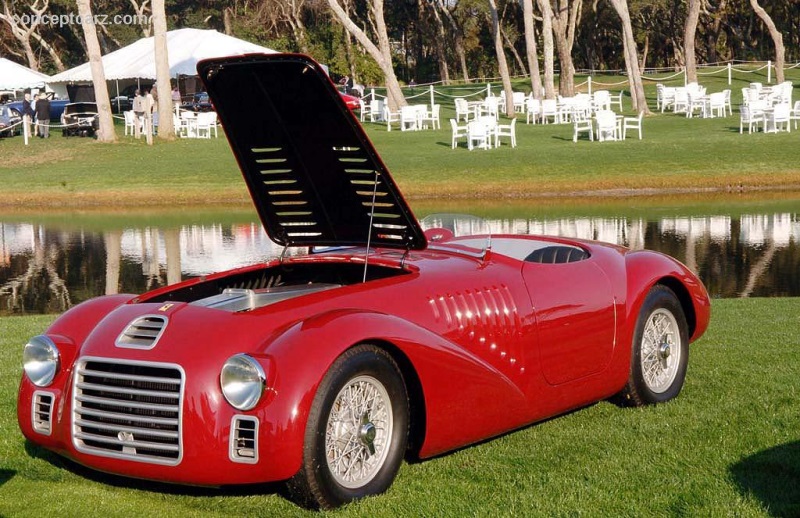1947 Ferrari 125 S Navigation
Ferrari is the most successful constructor in Formula One's history, but it all started rather humbly. Despite being an elite, high-profile automaker and racing team, Ferrari performed unobtrusively in Formula One's first season. Success rarely comes overnight, but the waiting period is dramatically shortened when you have already designed a dominant product on which to take and build off. Enzo Ferrari and Gioacchino Colombo came into being after helping Alfa Romeo ascend to the top of the grand prix world. This knowledge and experience would help Ferrari be immediately competitive in grand prix racing, but still not enough to break the grip the Alfa 158s had in 1950. Though Ferrari performed well in Formula One's first season, the dominance and the records would have to wait. Ferrari used 1950 to tweak their designs to break Alfa Romeo's hold on the championship and to begin the Ferrari/Formula One legacy.
Chassis #: 010I
View info and history Ferrari would turn to its model 125 for Formula One's first season. Designed in 1949, the 125 was Ferrari's first single-seater designed specifically for grand prix racing. However, much of the internals of the car had been taken from the 125S sports racer which was designed and built in 1948. The 125F1, as it became known, closely resembled one of Colombo's chassis designs—the Alfa Romeo 158. Of course, the 158 had already proven itself and obviously would have made a good basis for any team looking to be competitive right away and with aspirations for more. There were only two engine options the FIA allowed. Either a team chose a supercharged engine with a maximum displacement of 1.5 liters, or, the team would have to choose a normally aspirated engine that had a maximum of 4.5 liters. Ferrari decided to go the route of Alfa Romeo and used a twin-stage Roots-type supercharger to boost the power of their 1.5 liter V12 engine. Designed similar to an aircraft fuselage, the 125 consisted of a tube-frame chassis with longitudinal and cross members to help with strength while not gaining too much weight. The wide upside-down U-shaped nose was ever so slightly angled back and gently sloping. Of course, the nose was dominated by the radiator inlet to provide cooling for the 1.5 liter V12 that was hidden in the long, rounded nose. Just aft of the radiator inlet was a shapely scoop that protruded into the airstream through which air would pass and would be able to enter the supercharger. The addition of the supercharger would boost the engine's horsepower from what was around 118hp in the 125S to somewhere around 230hp. By 1949, another revision to the engine happened that boosted power up to around 280hp. This was still short from where the Alfa Romeo 158s were by close to 100hp. Still, this boost is what made Ferrari competitive straight away. And though not alone, at the time, Ferrari used a five-speed gearbox to match their higher-revving V12. Most teams were utilizing only four-speed gearboxes. On either side of the chassis, low and behind the front tire, there were two cut-outs where the six exhaust pipes exited and blended into single pipes that ran back the length of the car, underneath the rear suspension and out under the rear of the car. As with the Formula One cars of today, the Ferrari 125 sported many shark-like gills all over the engine cowling. These gills went to help expel the heat generated by the big V12 by the onward-rushing air creating a vacuum, pulling out the heat built up inside the cowling as the air rushed over the gills.
Chassis #: 010I
View info and history The Ferrari 125 utilized a double wishbone suspension for the front tires, with a transverse leaf spring to help with stability at the front of the chassis. Heading back from the nose, the shape of the chassis begins to change but in a gentle manner. The chassis begins to shift from the upside-down U-shaped body and begins to, in essence, stand up a little. The design shifts ever-so-slightly to more of a triangular shape to help counter, aerodynamically, the driver sitting up in the airflow. Of course this would only help so much. Between the driver and the little windshield, the airflow in this region was quite disturbed. The cockpit itself was rather tight with deep channeled out sides for the driver's arms. As with the day, the driver sat greatly exposed. Directly behind the driver sat the large, rounded fuel tank. The rear suspension on the 125 consisted of longitudinal struts that attached up near the cockpit and traveled back to the rear axle. Along with the struts, the rear suspension utilized a torsion bar style rear axle and shock absorbers for driver comfort and the all-important stability at the rear of the car. Besides all this, the main brake system used in those days, though not the greatest, but nonetheless employed on the 125F1, was drum brakes. As the season went on the 125 was refined and continually improved upon, but more so to influence next designs. Alberto Ascari was able to guide his 125 to a second place finish in Monaco. So it was obvious Enzo and Gioacchino were heading the right direction. Later on in the season the 125 was again updated and refined. The 125 was shortened and the rear suspension modified. The de Dion tube suspension was the latest technology of the day, and so, was incorporated, along with a leaf spring, into the 125's suspension. This package made Ferrari very competitive, but not enough to beat Alfa Romeo.
Chassis #: 010I
View info and history The Alfa Romeo 158 had one Achilles heal and it was shared by Ferrari's 125—it was too thirsty. The benefit of the power gained for the amount of fuel needed to do so was too high. Though not certain, it is likely Enzo was inspired by the performances of the Talbot-Lago T26C, which used its superior gas mileage as a competitive edge. Though down well over 100hp, they were there at the end because they didn't have to stop for fuel. Ferrari had to find an answer.
Enter the 275. Ferrari too faced the problem of poor gas mileage with their supercharged 1.5 liter engine, and thus dropped it. Instead, the team turned to Aurelio Lampredi. Lampredi designed and built an engine for the all-new 275 chassis. Lampredi built a 3.3 liter normally aspirated engine that was first employed in his experimental 275S. The same engine was then taken and employed into the new 275F1 chassis. The 275 chassis was also redesigned from that of the 125. The nose was totally changed and was more rounded and bulb-like. Instead of a nose that sloped back ever-so-slightly from the vertical like the nose on the 125, the nose on the 275 was more rounded, protruding forward. The rest of the chassis, forward of the cockpit, went through some refining, and yet, still had some similarities to the 125. The most noticeable changes made near the rear of the car included the longitudinal struts that were lengthened and extended further forward near the cockpit, but also, the shape of the bodywork that covered the fuel tank was changed. Instead of a more dramatic curve of the bodywork, the rear was extended further back; creating more of a torpedo shaped rear end. The 275, with its 3.3 liter engine, debuted at Spa Francorchamps and the Grand Prix of Belgium. The single overhead camshaft design was capable of producing around 300hp and Alberto Ascari was able to drive the car to a fifth place finish. Despite the new engine, it seemed the team took a step backward. The performance was just not there, or at least not to level the team was seeking. And so, by the time of the race at Monza, Ferrari changed chassis designs two more times.
Chassis #: 010I
View info and history At the Grand Prix of Nations at Geneva, Switzerland, which did not count toward the championship, Ferrari unveiled its next design…the 340. By this time, Lampredi had designed a 4.1 liter V12. This engine was capable of producing around 335hp, enough to stay with the Alfa Romeos. Also, to make the car more stable, and thus comfortable for the drivers to take out to the edge of limits, a series of changes were employed. Enzo and Colombo made the overall length of the chassis longer. This helped to distribute weight and provide greater balance. To provide better stability, Ferrari employed the de Dion tube rear suspension once again. Ferrari also changed from the five-speed gearbox to a four-speed manual gearbox. The chassis, overall, was refined, made into a more flowing racing machine. The nose was rounded even more than the 275 but the angle of slope remained similar. The wheelbase remained wider than that of the 125. Much more of an emphasis was placed upon aerodynamics which can be seen from the front wheels back. The air scoop on top of the engine cowling was reduced in size and made more shapely. Instead of a windshield attached to the top of the chassis, appearing more like an afterthought, the windshield was incorporated into the shape and flow of the chassis on the 340. Driving the 340, Ascari was able to race with Fangio in his 158. It appeared Ferrari had found its contender in the 340. However, as the race bore on, the engine developed problems that led to Ascari's retirement. Despite having a good car that could challenge Alfa Romeo, Ferrari wanted a car that would absolutely break Alfa's dominance. Besides, Lampredi had his next engine ready to go. Therefore, Ferrari was done with the 340 and moved on.
Chassis #: 010I
View info and history Come September of 1950, Ferrari had their challenger—the 375F1. In a quest to defeat the Alfa Romeo 158, the Ferrari team never rested, always looking to tweak certain areas to make a more competitive race car. While rather happy with the 340 chassis, Ferrari, specifically Aurelio Lampredi, kept working on specifics, especially the engine, trying to find that balance between power, reliability and efficiency. He was able to produce a 4.5 liter version (the maximum Formula One would allow) of his V12 engine. And while the engine produced only slightly more power than its 4.1 liter predecessor, Lampredi had been able to work and produce an engine that balanced out better when it came to reliability and that mystical marriage between engine and chassis. The 375F1 simply worked, or at least it showed promise. It was, then, just some small details that had to be addressed and its first race at Monza proved that fact. Despite the only real difference between the 340 and the 375 being the 4.5 liter engine, the combination just worked better. Ferrari just missed the pole in its first race with the 375 and actually was leading a good majority of the race until another engine failure gave up the win to the Alfa Romeo SpA team. Despite the loss of the win, Ferrari still had a solid second-place finish in the race and signaled to the team they had turned the corner and the tables. Alfa Romeo's days of dominance were coming to an end…it was just a matter of when. At the end of the season, Ferrari ended up fifth in the driver's championship. The finish, however, didn't reveal how poised Ferrari was for the future. Formula One cars today undergo many changes throughout the season, no doubt inspired by Ferrari's 'always improving' mindset as displayed in the 1950 season, from the 125 right on up to the 375. Ferrari debuted four combinations of engines and chassis. Each model contributed to Ferrari's search for dominance and would help to shape Ferrari's legacy in racing and, especially Formula One. The Ferrari team perhaps best understood they weren't designing a chassis to be dominant, but in fact were pursuing building dominance. This meant continually improving, never settling or believing in one thing, or design, to hold the key. Dominance determined the chassis and the engine. It was the team's job to find out what that all looked liked. The models of the 1950 season stand as a testament to the Ferrari team's desire to always improve, to continue in the search for dominance. For Ferrari, it all started with these chassis designs and each subsequent design built upon the successes and failures of the previous. Never was it believed that one chassis had it all because each year presented the challenge of pushing the edge a little further back. The Ferrari team: Enzo, Gioacchino, Aurelio and the many others understood this. And the fact of Ferrari's legacy and records proves that drive, that focus, has never left.By Jeremy McMullen
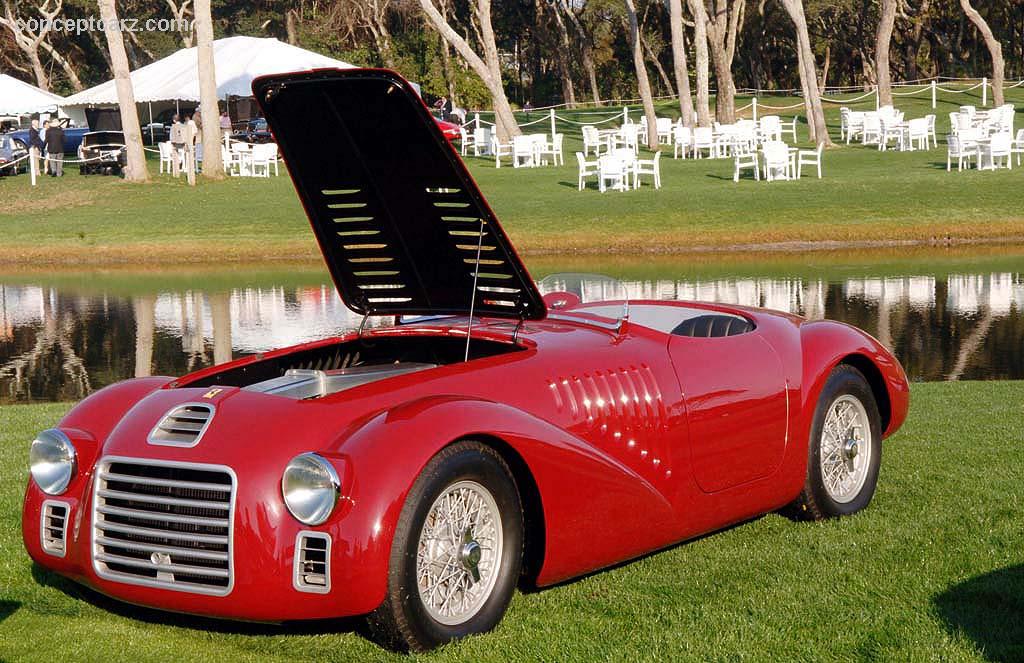
Chassis #: 010I
View info and history
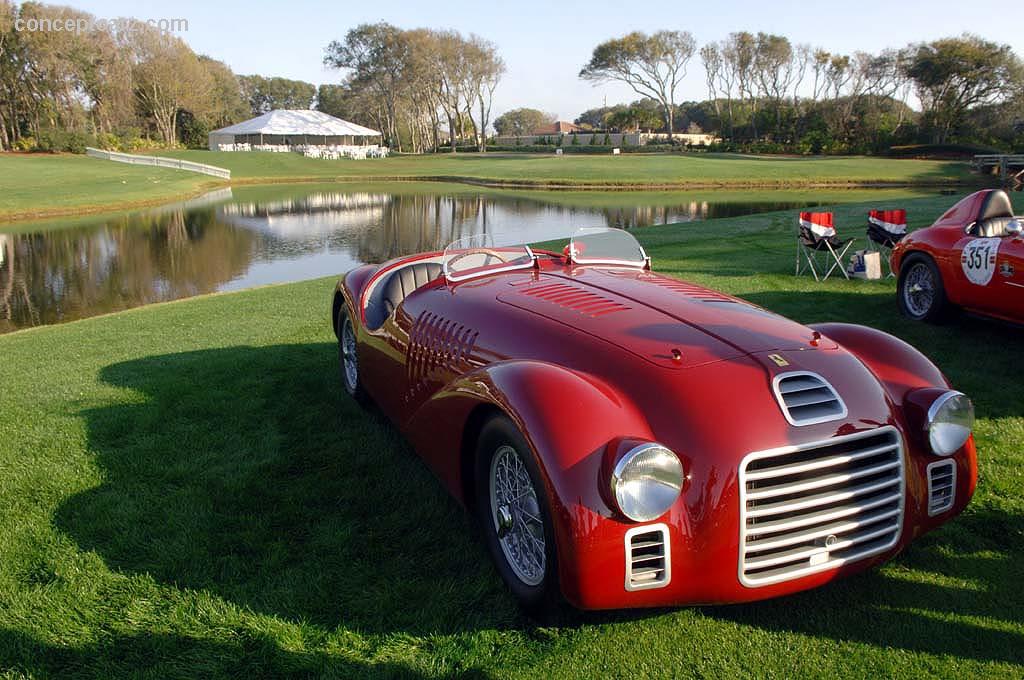
Chassis #: 010I
View info and history
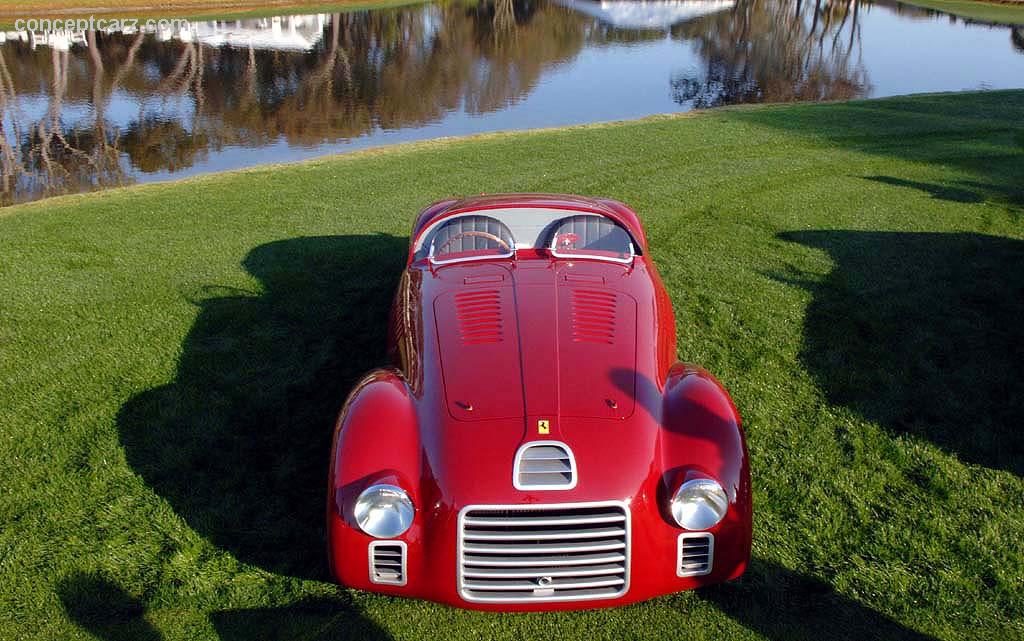
Chassis #: 010I
View info and history
Enter the 275. Ferrari too faced the problem of poor gas mileage with their supercharged 1.5 liter engine, and thus dropped it. Instead, the team turned to Aurelio Lampredi. Lampredi designed and built an engine for the all-new 275 chassis. Lampredi built a 3.3 liter normally aspirated engine that was first employed in his experimental 275S. The same engine was then taken and employed into the new 275F1 chassis. The 275 chassis was also redesigned from that of the 125. The nose was totally changed and was more rounded and bulb-like. Instead of a nose that sloped back ever-so-slightly from the vertical like the nose on the 125, the nose on the 275 was more rounded, protruding forward. The rest of the chassis, forward of the cockpit, went through some refining, and yet, still had some similarities to the 125. The most noticeable changes made near the rear of the car included the longitudinal struts that were lengthened and extended further forward near the cockpit, but also, the shape of the bodywork that covered the fuel tank was changed. Instead of a more dramatic curve of the bodywork, the rear was extended further back; creating more of a torpedo shaped rear end. The 275, with its 3.3 liter engine, debuted at Spa Francorchamps and the Grand Prix of Belgium. The single overhead camshaft design was capable of producing around 300hp and Alberto Ascari was able to drive the car to a fifth place finish. Despite the new engine, it seemed the team took a step backward. The performance was just not there, or at least not to level the team was seeking. And so, by the time of the race at Monza, Ferrari changed chassis designs two more times.
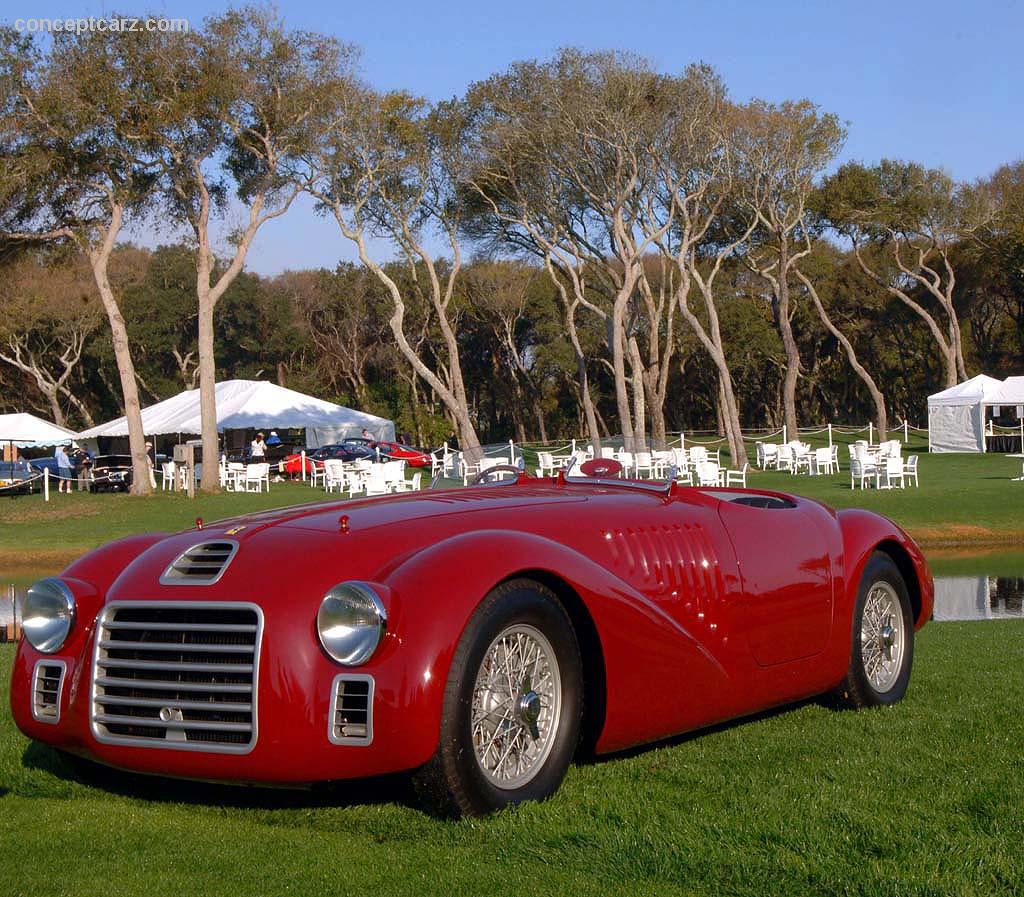
Chassis #: 010I
View info and history
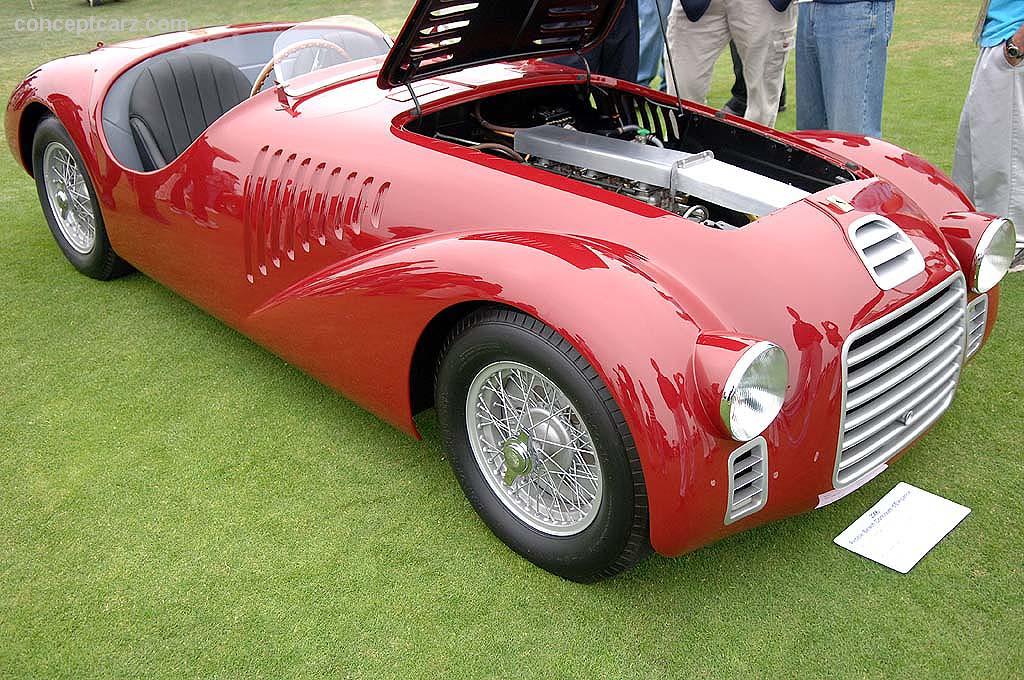
Chassis #: 010I
View info and history
Enzo Ferrari was born in Emilia-Romagna and raised in Modena, Italy. He served in the Italian Army during World War I as a mule-skinner. After a widespread Italian flu outbreak, in which Enzo was infected, he was discharged from service. Upon his return home, he searched for employment at Fiat but was turned away. Instead, he was given a job at a smaller car company called CMN where he redesigned used truck bodies into small, passenger cars. By 1919, he had joined the CMN racing team, but he had little success.
Chassis #: 010I
View info and historyHe stayed with CMN for a short time, leaving in 1920 to work for Alfa Romeo. He began racing their cars in local races and often drove them to podium finishes. The history of the Prancing Horse logo, which has adorned nearly every vehicle that has left the Ferrari factory and has become a symbol for sophistication, elegance, and superior performance, dates back to 1923. Enzo acquired the badge which had decorated the fuselage of Francesco Baracca's SPAD fighter. Barracca had been Italy's leading ace during World War I. It would be nearly ten years later before the badge would be applied to a racing car.Enzo had much success in local racing during the mid-1920s; Alfa Romeo rewarded his talents by offering him the chance to race in more prestigious races. Surprisingly, Enzo turned the offer down and retreated from racing until 1927. He remained with Alfa Romeo and worked in their factory until 1929, when he formed the Scuderia Ferrari as a racing team for Alfa Romeo.
Chassis #: 010I
View info and historyWithin a short amount of time, the Scuderia Ferrari team numbered forty drivers which included Tazio Nuvolari and Giuseppe Campari. Enzo himself could often be seen behind the wheel. He continued racing until 1932, with the birth of his first son, Alfredo 'Dino' Ferrari. A year later, factory support dwindled due to financial constraints as Alfa withdrew from competition. Pirelli stepped in and provided some support to the team. Even though the team was filled with talented and experienced drivers, they were often outclassed by other dominant teams of the era, such as Mercedes and Auto Union.Alfa Romeo resumed their support of the team in 1937 and placed their engineering director in control of the team. This meant a de-motion to Enzo as he became the team's Director of Sports. Unhappy with the arrangement, Enzo soon left the team. His contract was still binding and did not allow him to race for four years. It also prohibited him from designing a race car for four years.
Chassis #: 010I
View info and historyEnzo Ferrari established the Auto-Avio Costruzioni Company which supplied parts to other racing teams. In 1940, the company produced two cars which they entered into the Mille Miglia and driven by Alberto Ascari and Lotario Rangoni. The cars had custom bodies and outfitted with various Fiat mechanicals. During World War II, they produced items in support of the war effort. By wars end, Enzo was ready to return to racing and to produce cars bearing his own name. His facilities in Modena had been destroyed during the war and he had relocated to Maranello. In 1945, he founded Ferrari S.p.A.Ferrari 125
Producing racing cars after the war may not have been such a wise financial decision. War-torn Europe had been devastated; production of road-going vehicles was in short supply as they had not been produced for many years. High-end, exotic, sports racing cars were not high on very many peoples lists of necessities. In spite of this, Enzo turned his sights on racing. He approached Vittorio Jano to persuade him to design his first new car but was unable to secure his services. Instead, he found help from Gioachino Colombo, whom he had worked with prior to WWII at Alfa Romeo in their racing program.
Chassis #: 010I
View info and historyColombo was tasked with creating a versatile drive train and chassis. The engineer responded with drawings of a tubular frame and a 60-degree V12 engine which was very heavily inspired by his work at Alfa Romeo. Ferrari and Colombo decided upon a displacement size of 1.5-liters. In this form, it would be suitable for a sports racer and with the help of a supercharger, it would satisfy Grand Prix regulations. Enzo insisted on matting a five-speed gearbox to the engine, instead of the traditional four-speed unit. At this point in history, all Enzo had were designs, as Alfa Romeo was able to lure Colombo back, leaving Enzo without a chief engineer. Draughtsmen transformed the designs into usable drawings and by 1946, the first engines were cast. A few months later, engineer Aurelio Lapredi joined the team and aided with the engine production. The chassis construction was outsourced to Gilco. The suspension was comprised of double wishbones with transverse leaf springs in the front and a live rear axle. Hydraulic power drum brakes were used in both the front and the rear.In November of 1946, Enzo Ferrari announced their three production models. Each of the models were powered by the 1.5-liter V12 engine. These cars were dubbed, the '125', in reference to their unitary displacement size. This naming policy would stay with the company for many years.
Chassis #: 010I
View info and historyThe car had been announced near the end of 1946, but it would not be until March of 1947 before the first example was completed and powered by its own engine. Testing and fine-tuning followed. Lampredi had stayed with the company just long enough for the car to be completed and once again, the Ferrari Company was left without an experienced chief engineer. By May, two Ferrari's were ready for their debut. One of the cars was a fully enclosed roadster; the other in spyder configuration with cycle fenders. The cars were entered in the Circuito di Piacenza on May 11th with Franco Cortese as one of the drivers. The cycle fender car was involved in two accidents and the other suffered engine problems. Two weeks later, at the Grand Prix of Rome on Caracalla, Cortese drove the 125 S to its first victory for the Ferrari marque. The team would end the season with six victories of the 14 races in which they were entered. Throughout the 1947 season, the team worked on improving the vehicle. The displacement size of the V12's engine was increased by enlarging the bore and stroke. The result was a 1908cc engine size; the cars were renamed to 159 to correspond with the unitary displacement. By mid-1957, a third car had been completed, which was a further evolution of the cylce-fender car. 
Chassis #: 010I
View info and historyColombo returned as a consultant to aid with the development of the 159 engine. His work resulted in an increase in power which helped Raymond Sommer score a major victory at the Turin Grand Prix. Worked continued on the engine, continually enhancing its performance and often enlarging its displacement size. Soon, the nearly 2-liter, 166 engine had been created. This meant it was still eligible for competition in many popular racing classes. The cycle fender design of the third car was standardized and became the basis for the first production Ferrari. The car that had won at Turin, was given a 166 engine, serial number 002C, and renamed 166 Spyder Corsa. It was sold to a customer near the close of 1947. For 1948, Ferrari constructed seven cars. It was not long before a Ferrari 166 MM was driven to an overall victory on one of the world's toughest, and most competitive racing venues: the 24 Hours of LeMans. The car had been driven by Luigi Chinetti and Lord Selsdon.The original Colombo designed engine would become the basis for many Ferrari engines for years to come. 
Chassis #: 010I
View info and historyThe exact history of the very early Ferrari's is hard to trace. Their serial numbers were often changed as they were raced for a number of years, rebuilt, and sold as new cars to customers. Other times, the cars would be upgraded to modern specification and the chassis plate would be changed to correspond with the modifications. It is a common belief that the first two Ferrari's constructed were later modified to 166 Spyder Corsa specifications and sold to customers. A customer purchased sn 010I which housed many parts for the first Ferrari, sn 01C. Some believed that the 'C' was changed into a '0' and the 'I' was attached to the end. Upon delivery, the customer noticed that many of the parts had been used and showed signs of wear. The factory offered him a rebate. The car remained in his possession for a few years before being sold to an individual from England, who outfitted the car with a new roadster body style. In modern times, many of the original cars have been rebuilt to their original specification and configuration. This car shown is one such example. It carries chassis number 010I - which many believe to be 01C. The 'C' represented Competitzione or Corsa and it is often referred to as the Piacenza Roadster. There is much evidence to prove this belief, yet some remain skeptical. It is referred to as a 125 S and made its recent debut at the 2006 Pebble Beach Concours d'Elegance, though it was not entered for judging. It was shown a few months later at the Amelia Island Concours d'Elegance. By many, it is believed to be the first Ferrari ever constructed.The body is simple, yet very elegant. There are large grilles in the front of the car that aid in cooling of the brakes and engine. The two headlights are built into the fenders in an impressive fashion. The car is in right-hand drive configuration with two separate windscreens protecting the driver and passenger. For some, the debate on if this car is the original Ferrari will continue for many years to come.
by Daniel Vaughan | Mar 2007

Chassis #: 010I
View info and history

Chassis #: 010I
View info and history

Chassis #: 010I
View info and history
Producing racing cars after the war may not have been such a wise financial decision. War-torn Europe had been devastated; production of road-going vehicles was in short supply as they had not been produced for many years. High-end, exotic, sports racing cars were not high on very many peoples lists of necessities. In spite of this, Enzo turned his sights on racing. He approached Vittorio Jano to persuade him to design his first new car but was unable to secure his services. Instead, he found help from Gioachino Colombo, whom he had worked with prior to WWII at Alfa Romeo in their racing program.

Chassis #: 010I
View info and history

Chassis #: 010I
View info and history
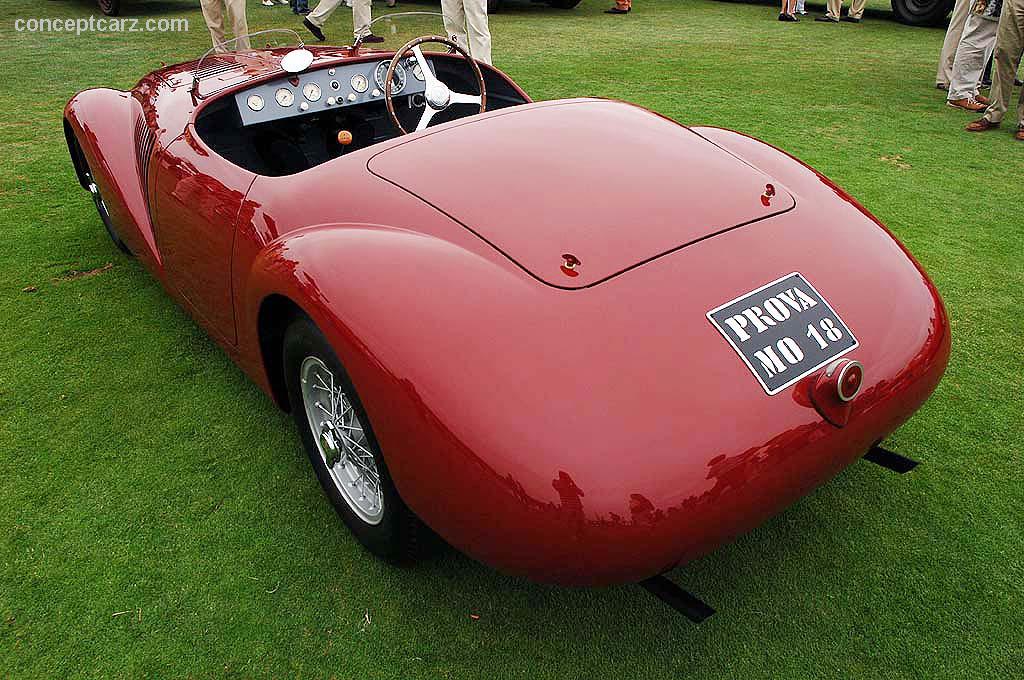
Chassis #: 010I
View info and history
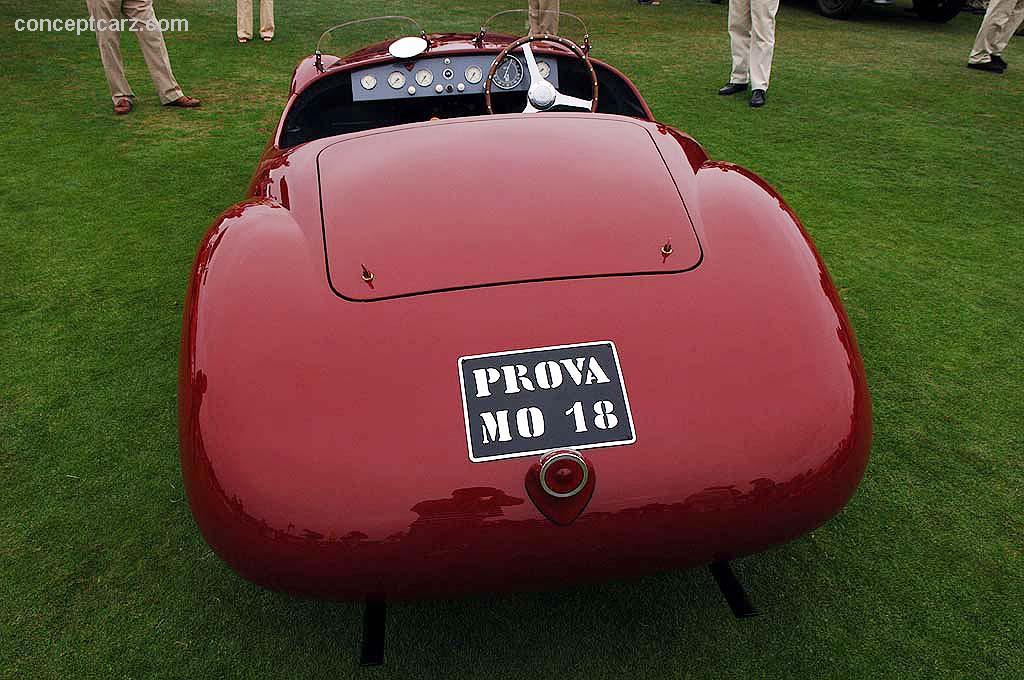
Chassis #: 010I
View info and history
by Daniel Vaughan | Mar 2007
- 1947 Ferrari 125 S Menu
- Article
- Image gallery
- Specifications
- Production figures
Ferrari
Similar Automakers
Similarly Sized Vehicles
from 1947
1947 Ferrari 125 S Vehicle Profiles
Recent Vehicle Additions
Performance and Specification Comparison
Related Automotive News

Phenomenal Ferraris and Italian Thoroughbreds Offered at Gooding & Company's Pebble Beach Auctions
The auction house announced a stable of Italian star cars, including a 1950 Ferrari 166 MM Berlinetta Le Mans, a 1961 Ferrari 400 Superamerica Series I Coupe Aerodinamico, and a 1954 Ferrari 500 Mondial Series I Spider.
A stunning group of star...

Ferrari Museum Celebrates Scuderia Ferrari's Landmark Anniversary With The '90 Years Exhibition'
Hypercars the story of Ferraris technological evolution told through milestone cars
Maranello, xx May 2019 – One of the great iconic names in motorsport with the power to unite an entire country and millions of fans from all over the...

Ferrari: Under The Skin
15 November 2017 - 15 April 2018
Major exhibition announced by the Design Museum in London to mark the 70th anniversary of Ferrari
£140M worth of Ferraris featured in exhibition displaying cars driven by racing drivers Peter Collins and Stir...

Ferrari's Anniversary Celebrations Get Underway With Re-Enactment Of 125 S Driving Through The Maranello Gates
Maranello (Italy), 10 March 2017 – On March 12 1947, Enzo Ferrari fired up the 125 S, the first car to bear his name. That test-drive on the streets of Maranello marked the start of modern Ferrari history. The then-modest factory quickly grew...
1956 Argentine Grand Prix: Least in the Kingdom is Greater
Speaking of the power of humility, the Bible says the least, within the context of the world, if they follow Gods commands, shall be greater than those considered great.
To say that Luigi Musso was the least within the kingdom of Scuderia Ferrari...













